CLASS:
NR447 – Collaborative Leadership in Healthcare
Preparing the Assignment
Follow these guidelines when completing each component of the assignment. Contact your course faculty if you have questions.
Directions
Complete this assignment following the steps below.
- Download the Fishbone and PDSA Quality Improvement assignment PowerPoint templateLinks to an external site.. Use of the template is required. A 10% deduction will be applied if the template is not used. See the rubric. Type your responses on the template in place of the [Type Here] text. Do not submit handwritten notes. Save the template and include your name in the file name.
- Select a quality improvement (QI) problem that requires quality improvement. This should be the same problem you described in the Wednesday Check-In. It may be a real problem you are currently encountering in practice or clinical rotations, a past or future concern, or a problem from the literature you are familiar with. Form a problem statement with that information. Some examples of problem statements include but are not limited to:
- The fall rate on the unit is above the benchmark.
- The rate of ventilator-associated pneumonia (VAP) on the unit is above the benchmark.
- The central line-associated bloodstream infection (CLABSI) rate is above the benchmark.
- Admitted clients boarding in the Emergency Department are experiencing delays in care.
- Healthcare providers are experiencing workplace violence with high injury rates.
- Gather 1-2 scholarly sources of literature that document this problem in healthcare and provide evidence supporting the need for quality improvement.
- Complete the sections in the template outlining the problem, the rationale for the selection of the problem, and the literature documenting the need for a solution. Each section should include 2-3 sentences. Cite sources where specified.
- Use the fishbone diagram in the template to complete a root cause analysis of the problem.
- Briefly describe the problem
- Under each category (People, Environment, Method/Process, and Equipment/Supplies), list at least two contributing factors to the problem. The contributing factors may fall under more than one category. See the example in the lesson.
- Mark each contributing factor as a realistic or unrealistic target for improvement efforts using the visual designations on the template. For example, staffing, while a contributing factor to many problems, is not a realistic target for improvement efforts.
- Complete the PDSA Quality Improvement Project outline using the spaces provided on the template (replacing the [Type Here] instructions with your text). Write this section acting as if you have completed the QI project.
- Select one contributing factor from the fishbone diagram. This should be one of the realistic targets for improvement efforts identified on the fishbone diagram.
- List 2-4 interprofessional stakeholders involved in the project (delete any unused [Type Here] text).
- Write one SMART goal for the PDSA Quality Improvement Project.
- Under the “Plan” phase, write a plan for the quality improvement project to meet the SMART goal. How will you meet your SMART goal? Describe your plan in 2-3 sentences.
- Under the “Do” phase, imagine you have completed the project. Briefly describe how the Plan was hypothetically implemented. What were the results? Include hypothetical data. Describe your implementation in 2-3 sentences using past tense.
- Under the “Study” phase, imagine that you have completed the project. Briefly evaluate the data. Did your results demonstrate successful implementation? Identify whether the goal was met or not met. Describe your evaluation using 2-3 sentences using past tense.
- Under the “Act” phase, imagine that you have completed the project. Briefly describe how to maintain the improvement or revise and repeat the PDSA process based on whether or not the goal was met. Describe your process in 2-3 sentences using past tense. See the example in the lesson.
- Click the Submit button at the top of this page to upload your completed assignment.
- Correctly cite and reference ideas and information that come from scholarly literature. Sources should be no more than five years old unless they are historical references. Hanging indent is not required.
- Follow grammar, spelling, word usage, and punctuation rules consistent with formal, scientific writing.
- Abide by Chamberlain University’s academic integrity policy.
Include the following sections (detailed criteria listed below and in the grading rubric).
Description of the Problem
- State problem to examine in Root Cause Analysis (RCA).
- State rationale for problem selection.
- Include a brief description of literature supporting the need for quality improvement (QI).
- Include in-text citations.
Fishbone Diagram
- Identify the problem in the designated area.
- Identify appropriate contributing factors for each category.
- Include at least two contributing factors for all categories. Delete any unused text boxes.
- Identify each contributing factor as realistic or unrealistic targets for QI efforts.
Correlation with Contributing Factor
- Select one realistic contributing factor from the fishbone diagram.
- List 2-4 interprofessional stakeholders involved in the project.
- Write one SMART goal for the PDSA Quality Improvement Project.
PDSA (Plan, Do, Study, Act)
- Under the “Plan” phase, write a plan (in 2-3 sentences) for the quality improvement project to meet the SMART goal.
- Under the “Do” phase, briefly describe (in 2-3 sentences using past tense) how the Plan was hypothetically implemented and what data was collected.
- Under the “Study” phase, briefly evaluate (in 2-3 sentences using past tense) the data. Identify whether the goal was met or not met.
- Under the “Act” phase, briefly describe (in 2-3 sentences using past tense) how to maintain the improvement or revise and repeat the PDSA process based on whether or not the goal was met.
SOLUTION
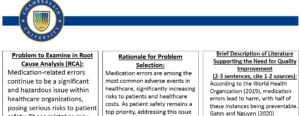 …………………purchase solution at $10 only
…………………purchase solution at $10 only
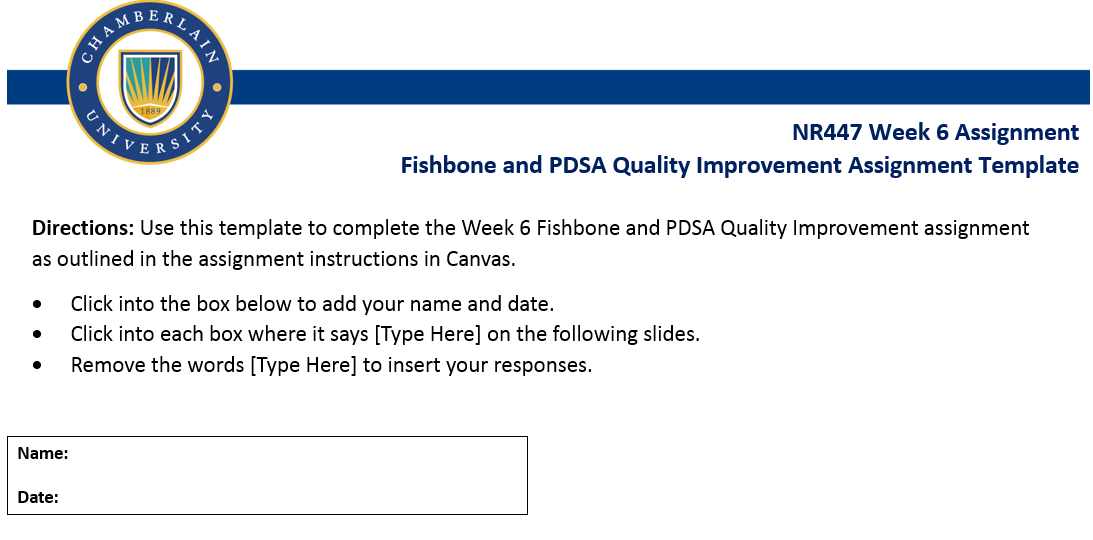
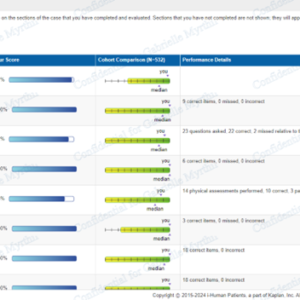
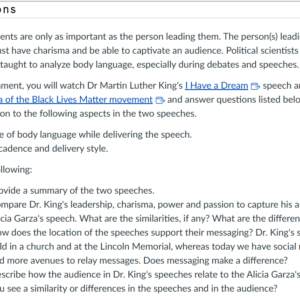

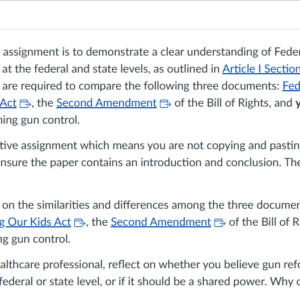
Reviews
There are no reviews yet.